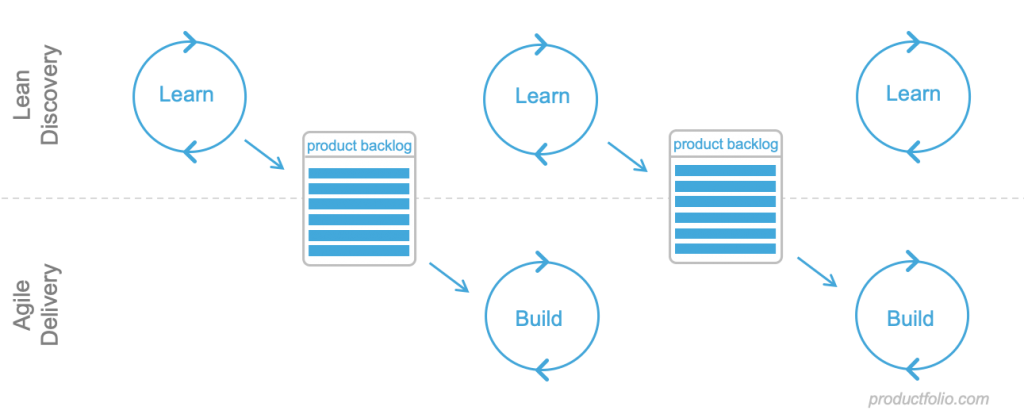What is Dual-Track Development?
Dual-track development is an approach to development in Agile that is characterized by the concurrent execution of both discovery work and delivery work. Product thought leader Marty Cagan has long used a simple conceptual model to explain this type of development, which entails continuous discovery and delivery. It shows the character of the relationship between these concepts, which are depicted in two tracks that run parallel.

The idea underlying this conceptual model was derived from a paper by Desiree Sy. But the “dual-track” term was made popular by Cagan since the original model lacked a name. Dual-track product development goes by other names as well – most notably, Dual-Track Agile.
Discovery and delivery are two types of work that are critical when looking to build successful products. One track enables us to do quick learning and validation while the other focuses on turning our ideas and learning into releases. Making product development a dual-track helps us to get better results.
Two key things to note about continuous discovery and delivery are:
- Both of these activities are happening at the same time. It is not a case of first doing discovery and then moving on to build.
- The activities are done by the same team. For instance, discovery is not done exclusively by Product while limiting engineering to delivery. The same cross-functional team splits its work into the two tracks.
It is Not an Exact Process
There is a need to treat models as what they are: things that help us to better grasp concepts. They are not set in stone. We shouldn’t view them as being 100% precise as to how processes should run. That is a risky thing to do!
Cagan didn’t intend the dual-track model to be prescriptive, but some people have other ideas. He disclosed how many people have been asking him to make changes to it at the risk of making it more rigid. For instance, the product management guru was requested to point out the activities to explain delivery work. People also wanted him to highlight the differences between Scrum and Kanban delivery processes, among other suggestions.
The requested augmentations weren’t bad or wrong, according to Cagan. But proceeding to integrate them would make things more complicated. The model will transition from a simple abstract model to a highly-specific development process flow chart. Dual-track Agile is intended to be process agnostic. The aim with it is not to limit us to a single discovery or delivery process. Different processes are fitting for different situations.
The model is more about making discovery and development continuous for better products. How we go about doing that is left to us when it comes to specificity.
Dual-Track Development is about Solving Real Problems
What is more important with dual-track Agile isn’t the exact process but ensuring that we are solving valid problems. It is about quickly validating our ideas and building something based on our learning.
We should think of this type of development as one that enables us to build better products. It lets us make better use of our time and reduce the amount of wasted resources. The key thing is to make sure that discovery work and delivery work are not happening in phases. These two kinds of work must be done concurrently and collaboratively. A cross-functional team that features Product, Engineering, Design, and other relevant teams should see to their execution.
It will not be unusual for Product and Design to spend more time on discovery activities while Engineering focuses more on delivery. But it is not a case of exclusivity in which, for instance, engineers are limited to coding. With dual-track product development, our interest is less in pushing out features. It should be more in delivering value. We need to measure our success not by the number of features released but by business outcomes.
The process is not the primary focus of dual-track Agile. What is important is to make product discovery and delivery continuous, with the cross-functional team carrying out the activities concurrently. We are on the right track if we are actively collaborating to constantly ensure that we are solving real problems and building the right solutions.
The dual-track development model is about promoting a valuable culture and not dictating a specific process.